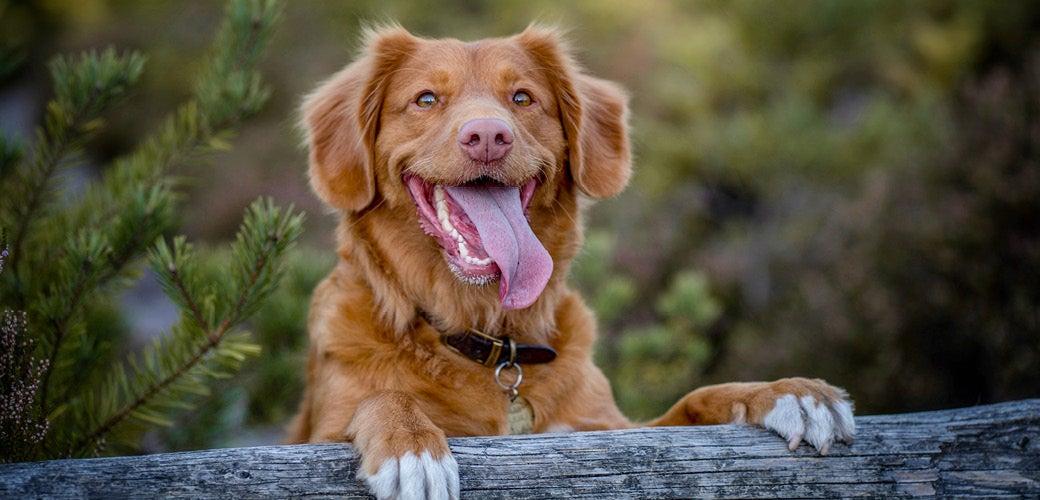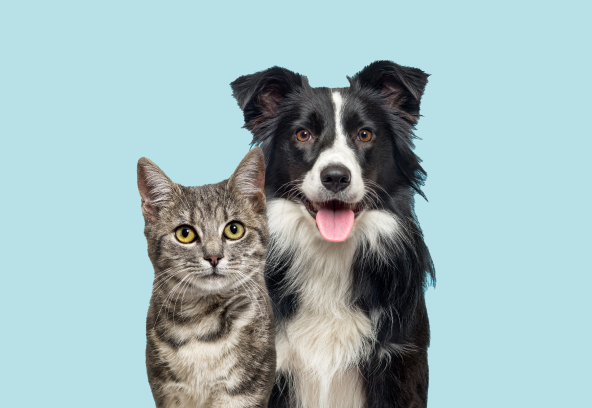What Your Dog’s Body Language is Telling You

While your dog may not be able to talk, their body language speaks volumes. Here are some of the things your dog’s body language may be telling you...
When it comes to a dog’s body language, there are a few things we humans tend to take for granted. Like that a wagging tail means they’re happy, while a tail tucked tightly between its legs means they’re afraid.
However, there are many other emotions communicated by a dog through its body language. Understanding what these mean is important to ensure your pet’s happiness and health and help make sure their interactions with other dogs are safe. After all, body language (and maybe the occasional vocalisation) is the only way your pooch can communicate with you.
Wagging tail
When it comes to a wagging tail, it may not just be happiness they’re expressing. In fact, a tail wag expresses that a dog has been ‘emotionally aroused’ – which can be either positive or negative.
When trying to interpret what a tail wag actually means, the direction and speed can help clue you in. Fast, full-body, side-to-side or helicopter tail wags are expressing excitement – for example, if they’re reunited with an old friend they haven’t seen for a while.
The height of a dog’s tail can also tell you a lot about how they’re feeling. A tail held high shows the dog is feeling confident or may be aggressive, while a tail lower to the ground may indicate the dog’s feeling a little scared or submissive. A tail that’s pointing straight back indicates they’re focused and curious about something that’s caught their attention.
Facial expressions
Just like their tail, a dog’s facial expressions can give you clues about how they’re feeling. The position of their ears and eyes and what they’re doing with their mouths can all help you determine how your dog’s feeling.
For example, dogs have incredibly mobile ears, which not only helps them get a better idea of what’s happening in their surroundings, but they’re also used as communication tools.
Ears held in a neutral position show they’re relaxed; perked ears mean they’re interested in something, and flicking ears indicate they’re uncertain about their situation – or are trying to figure out where a noise is coming from. Ears pinned back can mean they’re either very scared, or very excited to see you.
And, while you may think your dog’s licking of their lips means they’re looking forward to dinnertime, it can actually mean they’re feeling anxious. And that big yawn? While they may be giving you a not-so-subtle clue that it’s time to go to bed, it could also indicate that they’re feeling a little stressed or unhappy.
Look at the whole picture
But you shouldn’t just consider your dog’s individual body parts when trying to read their body language. It’s important to look at the whole package.
As mentioned above, a dog that has its ears pinned back could mean they’re happy to see you, or that they’re incredibly nervous. To help you decide which it is you’ll need to look at what they’re doing with the rest of their body.
A nervous dog will be trying to make itself look as small as possible; they’ll have a hunched posture, with its tail held tight between its legs and will be reluctant to get closer. Meanwhile, the dog that’s happy to see you will look much more relaxed, their tail will likely be wagging, and they’ll be keen to get close for licks and pats.
While dogs can’t speak, their body language can tell us a lot about what they’re thinking and feeling. Better understanding a dog’s body language can help us figure out if a dog is happy, healthy, nervous, afraid, or aggressive, and help keep ourselves and our dogs safe.

